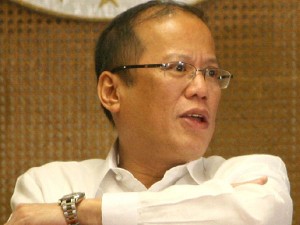PH may start exporting rice this year
DAVOS—President Aquino sees the Philippines, which used to be the world’s biggest importer of rice, attaining full self-sufficiency and even turning into an exporter before the year is over.
That assumes that the country will enjoy good weather this year, Aquino said Thursday night in a private session tackling anti-corruption initiatives at the annual meeting of the World Economic Forum here.
“From importing almost two and a half million metric tons of rice in 2010, now, if the weather permits, we are looking at full rice self-sufficiency—and even the possibility of exporting it—by the end of this year,” the President said.
The long-time quest for rice self-sufficiency was mentioned by the President in the context of reforms pursued by his administration in the operations of the National Food Authority, the government agency tasked to ensure rice self-sufficiency.
Aquino said his predecessor had allowed the NFA’s debt to balloon to $4.4 billion from $300 million over the course of the former president’s nine-year term, insisting on importing more rice than was needed to feed the people.
“So you had a staggering amount of debt, and rice that no one would eat, rotting in warehouses that the government, of course, had to pay rent for. Any sane and reasonable person would not have done this, but it was done, and that was the reality we had to deal with. This insanity was justified by convincing our people that we were not capable of feeding ourselves through tilling our own land, hence the necessity of importing rice,” he said.
Since his administration assumed office, Aquino said more funds were plowed into irrigation, arterial roads, research into higher-yielding varieties and other technologies, making the goal of self-sufficiency viable.
In a research on the Philippine rice situation last year by Asian Development Bank consultants, it was noted that the Philippines continued to grapple with significant food insecurity. “Years of preoccupation with rice self-sufficiency and rice supply and price stabilization have not made a dent on the problem,” the research said.
Some of the food insecurity stemmed from rice supply issues and high domestic prices. Some of these might not be apparent in recent years but the research said current trade policies did not augur well for long-term supply and price stability.
The ADB research dated January 2012 noted that in the early 1990s, the government was importing too little and consumers generally paid high prices for rice. In 1995, it said the government imported too late, initially restricting imports but only to see domestic prices spike up, consumers getting alarmed and the government eventually scrambling to restore stability in the market.
“Thereafter, the government has imported aggressively and domestic prices have moved considerably closer to international prices in the last three years. But the supply stability achieved had cost too much, bloating the NFA’s losses and borrowings and drawing attention to the fact that the strategy is unsustainable,” the research said.

